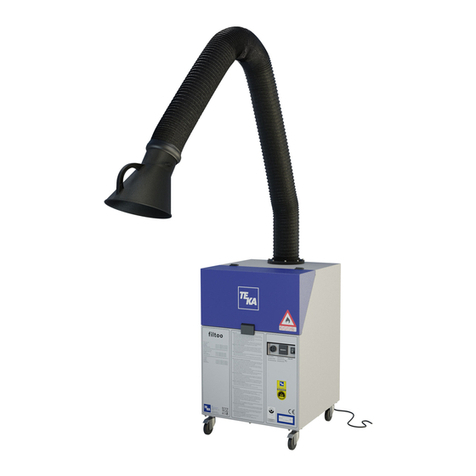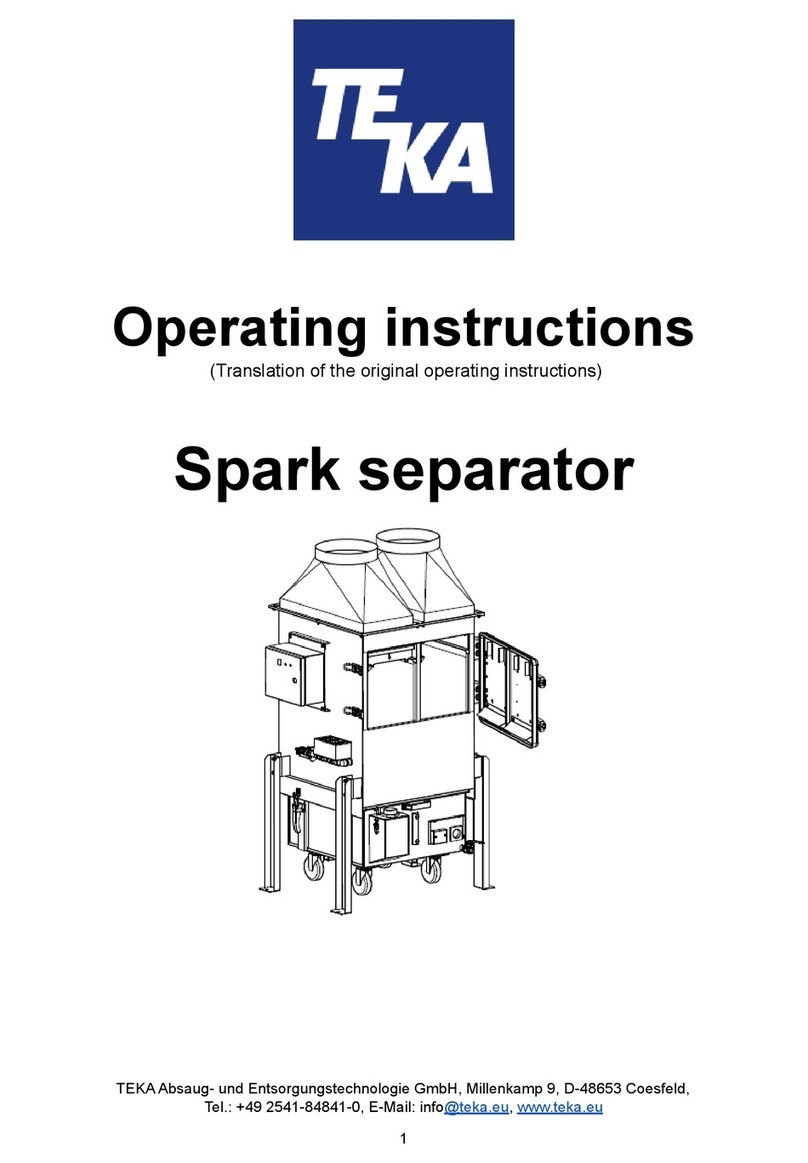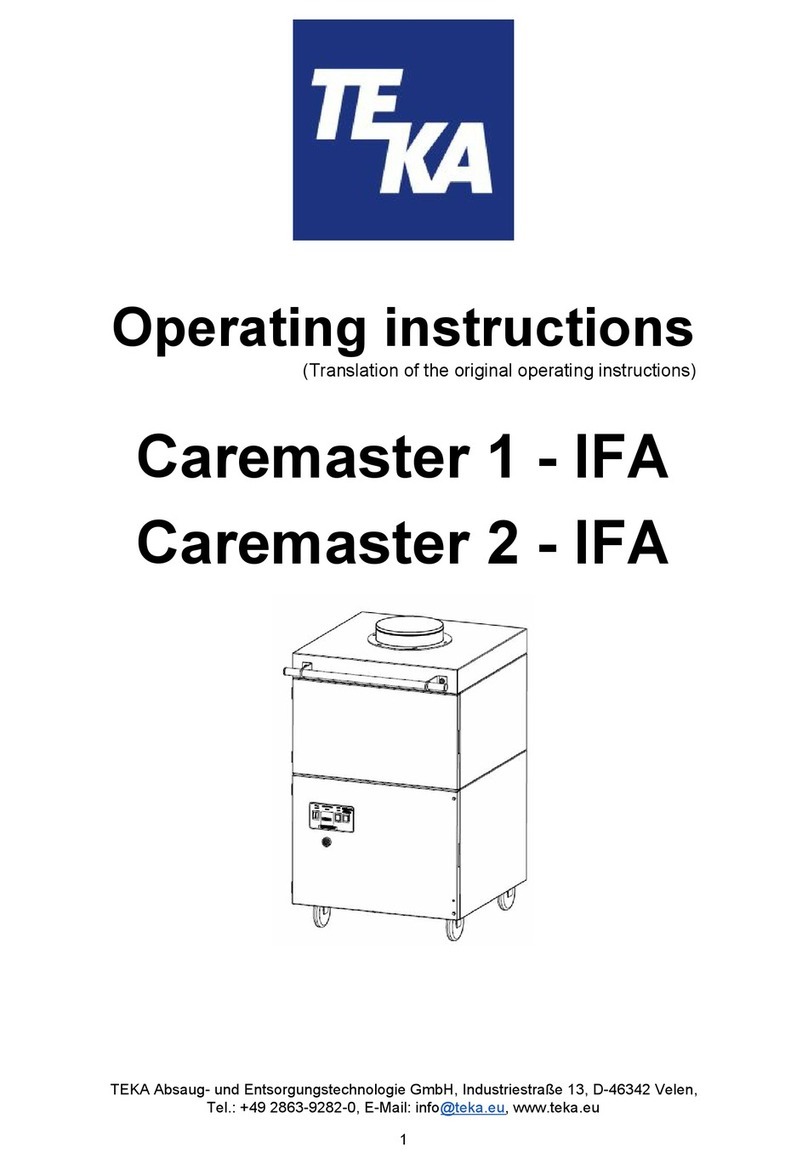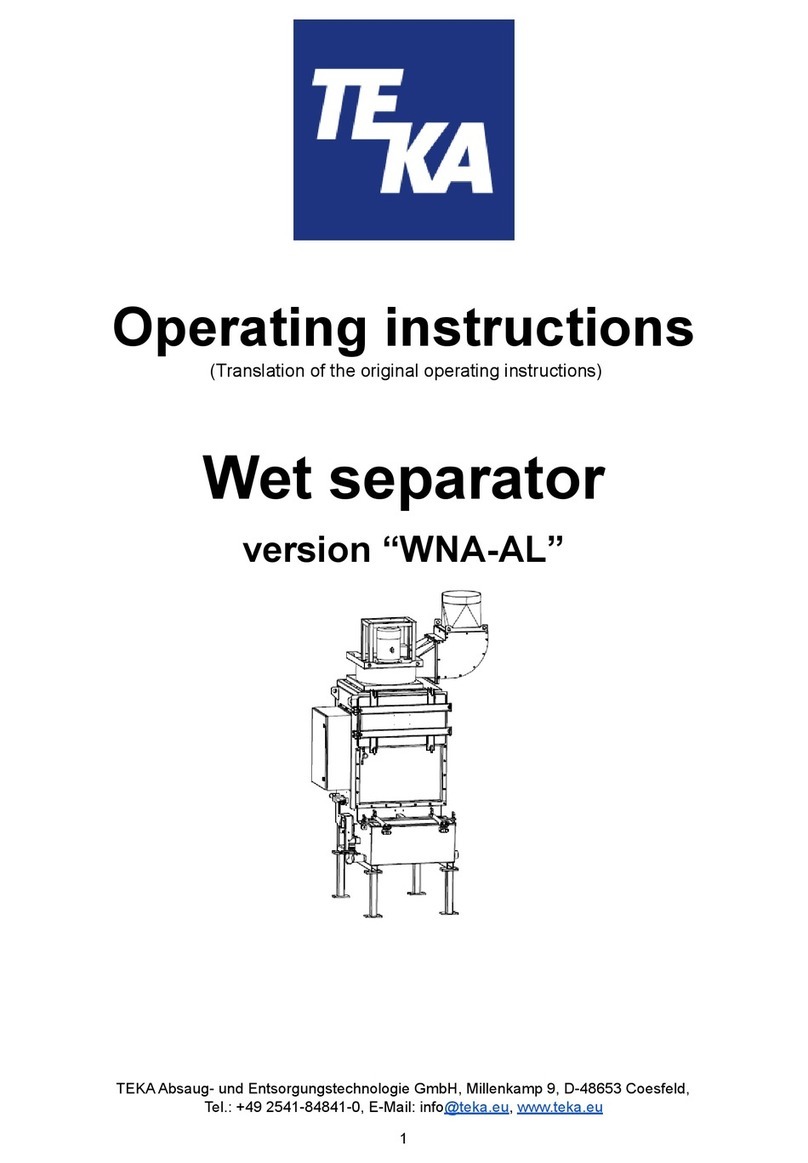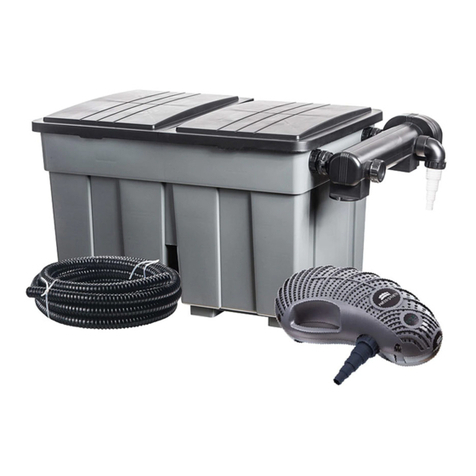
5.2. Electrical connection
Risk of electric shock.
Electrical plants and equipment may only be built, modified and maintained by a qualified
electrician or under the direction and supervision of a qualified electrician. Do not work on
live electrical components and elements if you are not sure that these are indeed
disconnected. If necessary, disconnect the device from the mains. The operator is
responsible for a potential-free balance of the equipment.
If the unit is equipped with a frequency converter, then it may only be operated on networks
with an AC/DC sensitive RCCB. For frequency converter operation, the cross section of the
protective conductor
● must be at least 10mm²,
● and must be at least equal to the size of the operator side outer conductor
cross-section.
Electric malfunction possible in cause of an incorrect power supply.
Pay attention to the admissible supply voltage. Please observe the specifications on the type
plate.
● Mount the housing of the external control (if it is not mounted on the device itself) close to the
device on the wall or at any other appropriate mounting point. Or mount the control together
with a cabinet console on a suitable surface, for example using lag bolts or heavy-duty anchors.
The housing is not suited for outdoor installation.
● Connect all visible cables and hoses are according to their functions. When delivered they are
labelled according to their functions. When connecting to the control, please observe the
specifications on the circuit diagram which is attached to the control.
● Connect the unit to the power supply.
● Check if the direction of fan rotation is correct (This is not necessary in the case of units with a
frequency converter). A wrong rotation direction can be identified thanks to the sticker sticked to
the fan scroll which is showing the direction. Compare the rotation direction on the sticker to the
rotation direction of the motor cooling fan when the motor is running down after being switched
off. If the motor rotates in the wrong direction, disconnect the device from the power supply and
exchange two phases at the supply line to the control.
When the fan rotates in the wrong direction, the extraction capacity is
reduced.
BA_Nassabscheider_WNA_211118_EN












